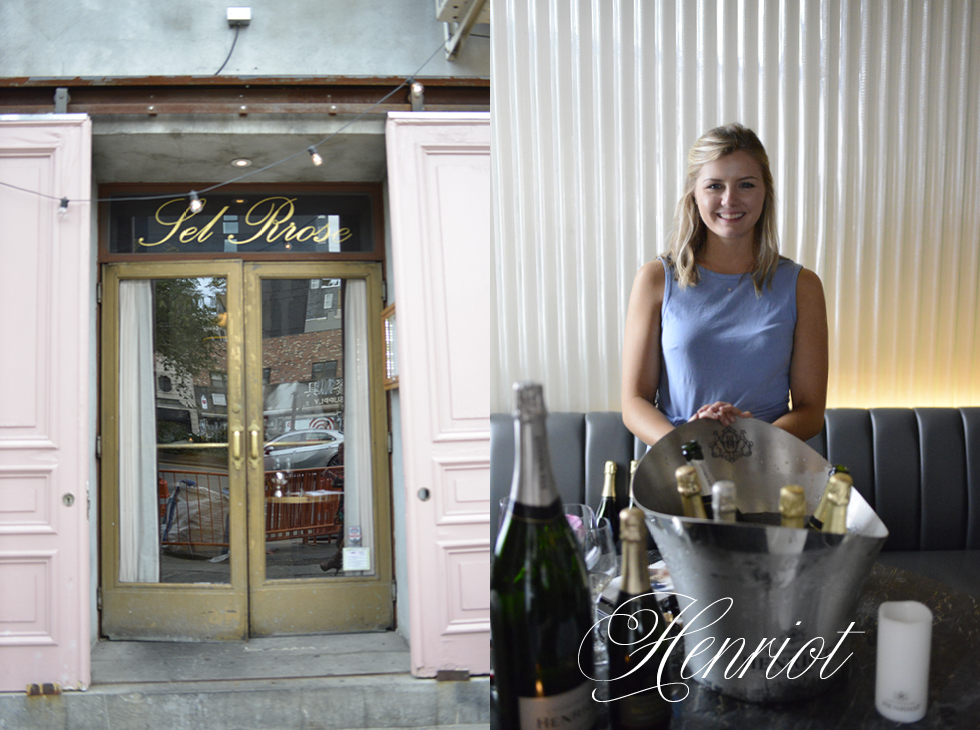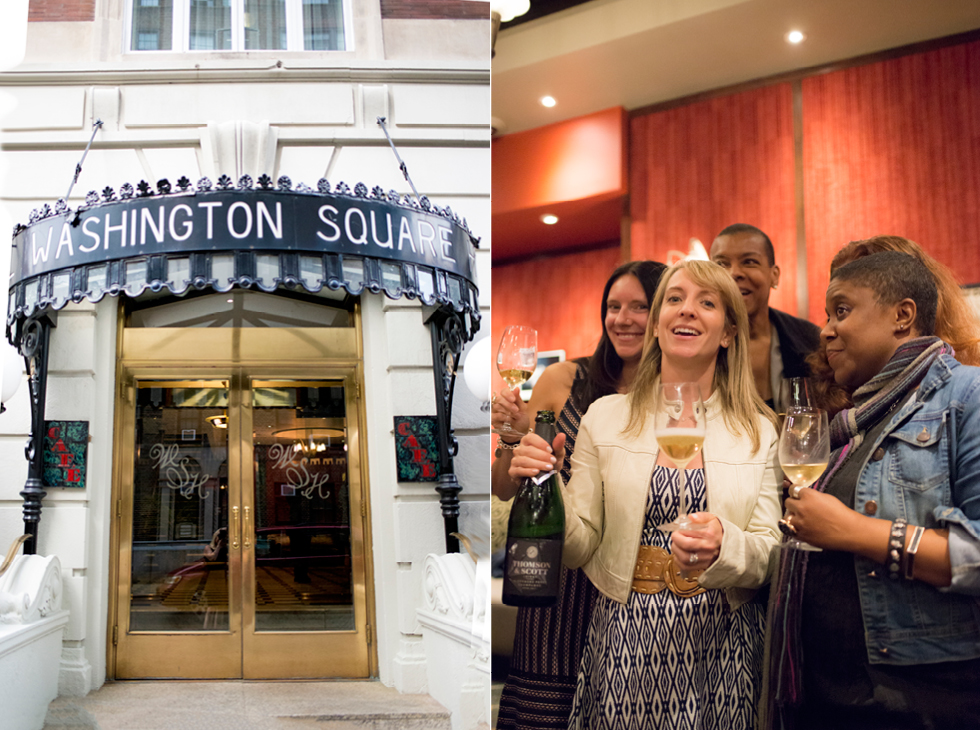The holidays are right around the corner, and that means there will be lots of toasting, celebrating, and, of course, some bubbly in your future. I’ve got some stellar recommendations from some of the women who are running the show at the world’s top sparkling brands. Statistically, 80% buyers of bubbly are female, according to Tawnya Falkner, owner of Le Grand Courtage, and one of the panelists at The Fizz is Female’s debut event at Corbuzz, in the East Village, NYC.
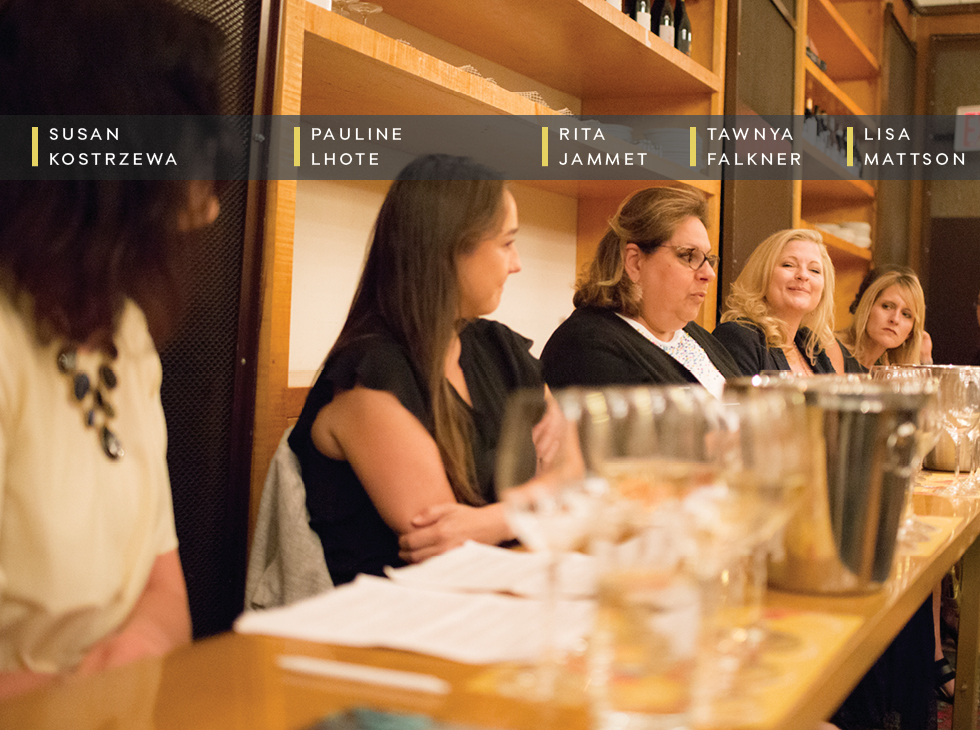
The Fizz is Female was orchestrated by Blaine Ashley (who also founded NYC Champagne Week in 2013). She assembled a panel of six leading women in the field. Moderator, Susan Kostrzewa, the executive editor of Wine Enthusiast Magazine asked compelling questions on trends of the industry, French vs American markets, and how the reasons for drinking champagne have gone from special occasions to pairing with pizza and spicy foods. On the panel: Pauline Lhote, a young winemaker who grew up in Champagne, and brought her talents to CA for the Chandon label. Rita Jammet, former owner of La Caravelle, who traded the restaurant biz for a chance at her own namesake label. Tawnya Falkner, owner of Le Grand Courtage, had lots to say about being a woman in a male-dominated field, arrived on the scene with a Brut and Rose to savor. Marketing Expert Lisa Mattson reps the Jordan Vineyard and Winery in CA, stressed sparkling wine’s wonderful complement to food and how foodies everywhere are discovering great pairings. Lastly, Jen Pelka, who owns The Riddler in San Francisco, talked about the popularity of her bubbles-only bar which came about through all-female investor group.
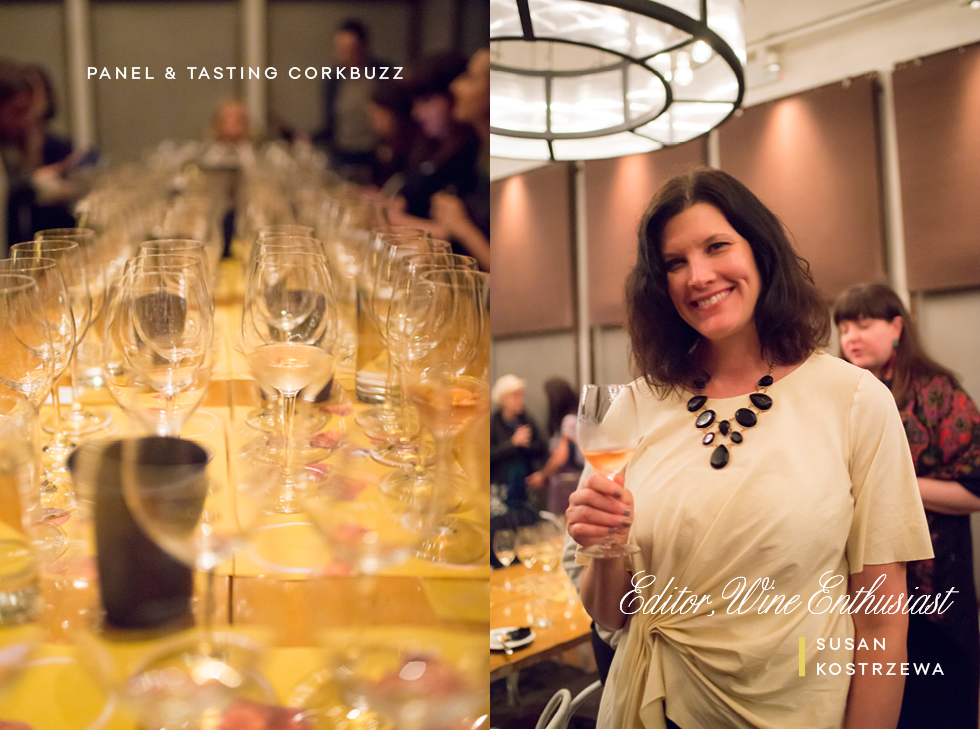
Here are some basic facts to get you started on a delicious champagne journey and allow you to appreciate the effort that went into its creation.
Three Grape Varieties
Champagnes are made mostly with these three varieties: Chardonnay, Pinot Noir, and Pinot Meunier. The Chardonnay grapes give Champagne its marvelous acidic nature, a touch of elegance, and a range of biscuit flavors. Pinot Noir provides a body to the wine and gives it character. The Pinot Meunier add a fruitiness.
Double Fermenting
To create Champagne, first wine is fermented in mostly steel containers, where yeast absorbs the sugars and carbon dioxide is dissapated. After careful blending takes place, the wine is transferred into bottles with more yeast and liqueur de tirage (a blend of fine cane or beet sugar). The carbon dioxide released from the yeast then becomes the bubbles.
The Role of Reserve Wines
Reserve wines are quality, aged wines which are reserved specifically for blending, especially in times of very poor vintages (like the 2001, known as the worst since 1873). Champagne brands like to keep these wines around in order to maintain a consistent style—the character and complexity that is indicative of the house. Reserves also allow wine a drinkability at an earlier age, as they impart a roundness, texture, and a matured complexity.
What Are Wine Lees?
You might come across the term “sur lie” or wine left on the lees, and wonder what that means. Basically, lees are the dead yeast cells leftover from fermentation. The fine lees (which do not sink to the bottom) are left in wine to add complexity, adding wheaty, nutty, or floral notes. Our palates sense this as an increased body in the wine. Non-vintage Champagne (blended from different growing seasons) must be aged for 15 months in bottle and spend at least 12 months on lees. A vintage Champagne (made from one exceptional growing season) must be aged on lees for three years minimum.
Tasting the Wine
Now that you know a little more about Champagne, let’s move on to tasting. At The Fizz is Female, we were treated by nine exceptional brands, and there was not a bad sip in the bunch. Any of these bottles would be a welcome addition to the party season.
Henriot
Day 2 of the Fizz is Female was hosted at Sel Rrose, which happens to be one of my favorite spots for oysters in the city (read more here and here). Henriot (photo at the top of this post) offered up a Blanc de Blancs with an exceptionally high proportion of Premiers and Grands Crus in its cuvées. Made with 100% Chardonnay, the Henriot family is drawn to grapes grown where the chalk is purest, thus giving the wines an intriguing and iodine minerality. True elegance results from the input of 40% reserve wine, aged 4 to 5 years. Notes: brioche mingled with quince jelly and acacia honey, with wonderful length. About $59.
Their Brut Rosé breaks down to 40% Chardonnay, 50% Pinot Noir, and 10% Pinot Meunier. This cuvée is a blend that showcases Pinot Noir from the Montagne de Reims, with 35% reserve wines, aged a minimum of 3 years. Notes: exquisitely nuanced and full of surprises. Intense and playful, its delicate copper-pink appearance is enough to put a spring in your stride, while the Pinot Noir structure brings exquisite balance. About $69. champagne-henriot.com
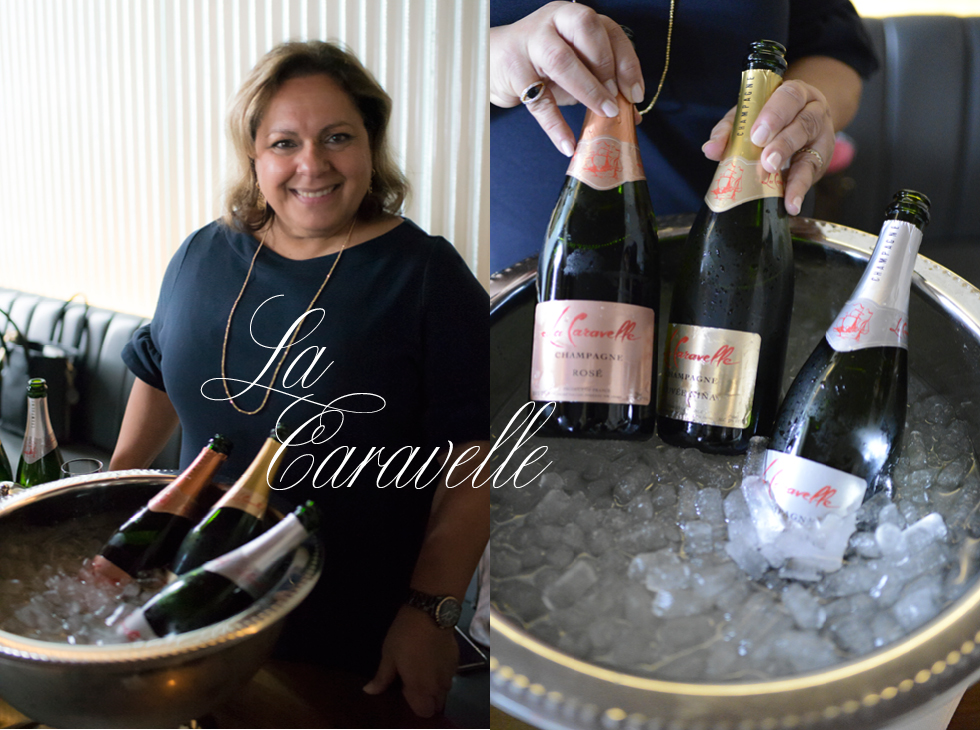
La Caravelle
This brand arrived with their three varieties: The Champagne Cuvée Niña, their signature brut, is named after the Caravelle ship built by Columbus for his voyage to the New World. Made with multi-vintage cuvée, the Champagne is a blend of 40% Chardonnay, 30% Pinot Noir and 30% Pinot Meunier. Notes: an elegant floral nose with notes of yuzu, white peaches and gingerbread. About $38.
Champagne Rosé uses the same base blend as the Niña plus red wines from well-known appellations such as Aÿ and Bouzy. Notes: A floral and red berry bouquet, evoking hints of cherry almond, pomegranate and fennel. About $39.
The Champagne Blanc de Blancs is made with a blend of the best Chardonnay crus primarily from the Côte des Blancs and aged for three years. Notes: an elegant bouquet perfumed with white flowers and a refreshing, lively flavor with notes of citrus and rhubarb. About $38. All three varieties can be found at many top restaurants in NYC. lacaravelle.com

Chandon
Though not technically “Champagne” Chandon creates sparkling wines using the same three grape varieties as they do in France. They take two years to craft a single bottle using French principles with grapes grown in the California sunshine. The Brut Classic expresses the signature flavor profile: apple, pear citrus flavors and aromas, with a hint of spice that leads to a soft, dry finish. $24. The Rosé offers intense ripe strawberry, watermelon, and red cherry fruit aromas and flavors. A creaminess and defined structure from the Pinot Noir. $26.
This company also offers mini sizes and unique and fun packaging by designers, like an all-aluminum bottle, to add to the party scene. They create exceptional vintages led by Pauline Lhote, who spells things out in a cute video on the Chandon website. chandon.com
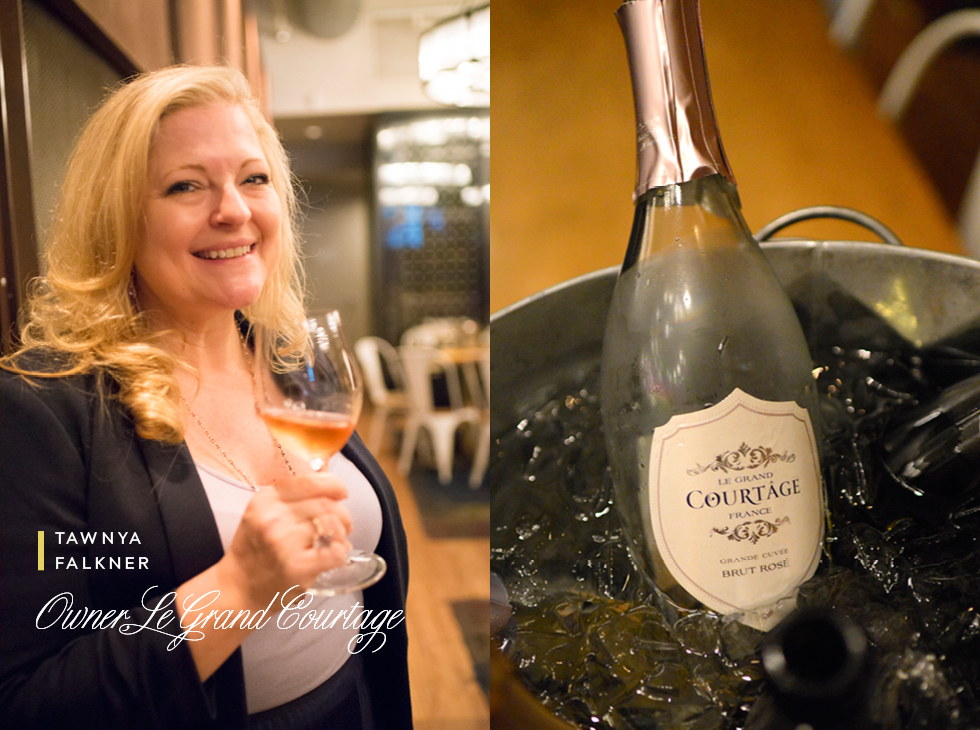
Le Grand Courtage
This brand’s name translates to The Great Courtship, and encourages everyone to “Embrace life. Dream big. Accept All Invitations.” In other words, Le Grand Courtage insists you don’t need a special occasion to enjoy Champagne. The company is owned and managed entirely by women, whose focus is on bringing people together to share food, wine and laughter. Proprietor Tawnya Falkner brought along two varieties for us to taste, both of which emanated a lovely elegance.
The Blanc De Blancs Brut was crisp and light, with mini bubbles, a mix of Chardonnay, Chenin Blanc, Ugni Blanc, and Colombard. Colombard’s higher acidity provides structure, length and a pleasant minerality which is supplemented by Ugni Blanc’s fresh fruit profile. Notes: Hints of green apple, honeysuckle and toasted brioche. A delicate balance of dryness and acidity. Flavors of Meyer lemon, honeydew & soft floral notes. Great length. $24.
The Brut Rosé is a blend of Chardonnay, Ugni Blanc, and Gamay grapes. This light pink sipper is super smooth. Notes: Bright aromas of strawberry and raspberry combine with notes of lilac and violet. A perfect balance of freshness, fruit, acidity, and a light sweetness. I think this one was my favorite of the bunch. $24.
Both varieties come in attractive mini bottle versions, at $7 apiece. legrandcourtage.com
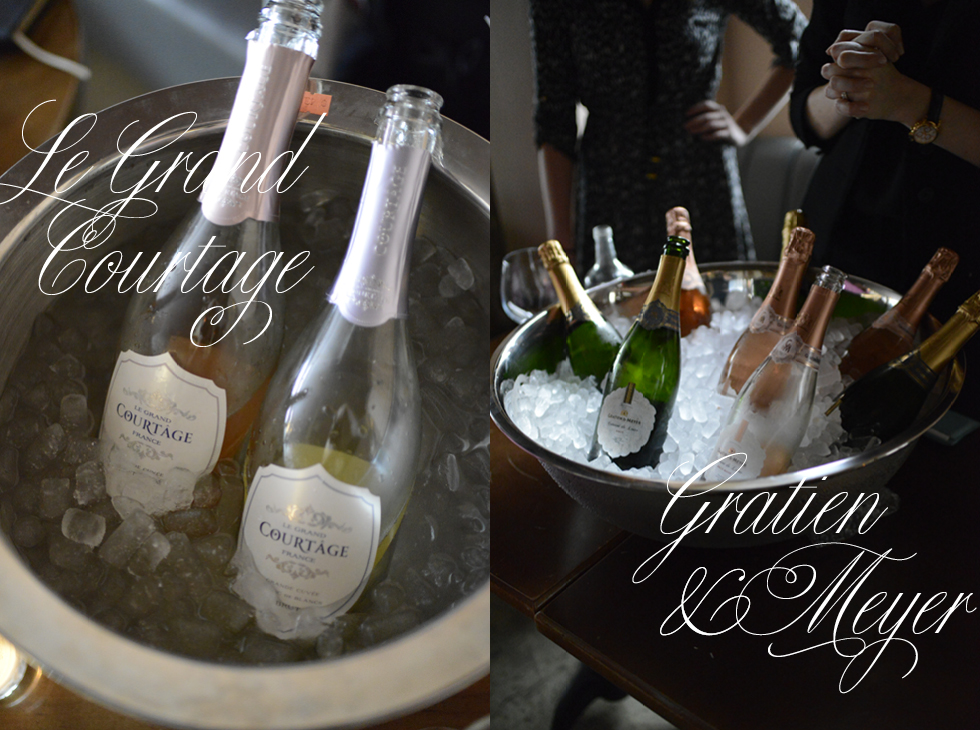
Gratien & Meyer
Cremant De Loire Blanc Brut is made with 100% hand-picked fruit from vineyards in Saumur, using only the first pressing. A blend of 50% Chenin Blanc, 40% Chardonnay and 10% Cabernet Franc (which adds weight and body), the Cremant de Loire Appellation is among the most demanding in France. Method Traditionelle secondary fermentation in the bottle is followed by 36 months on lees in the extensive underground ‘caves’ of their cellar. Notes: Brims with aromas and flavors of green apples, citrus and quince, complimented with a touch of bread-y complexity. Persistence of flavor and lovely lip-smacking acidity. $23. Crémant de Loire Brut Rosé’s rich fruitiness is balanced with a crisp acidity. $15. gratienmeyer.com
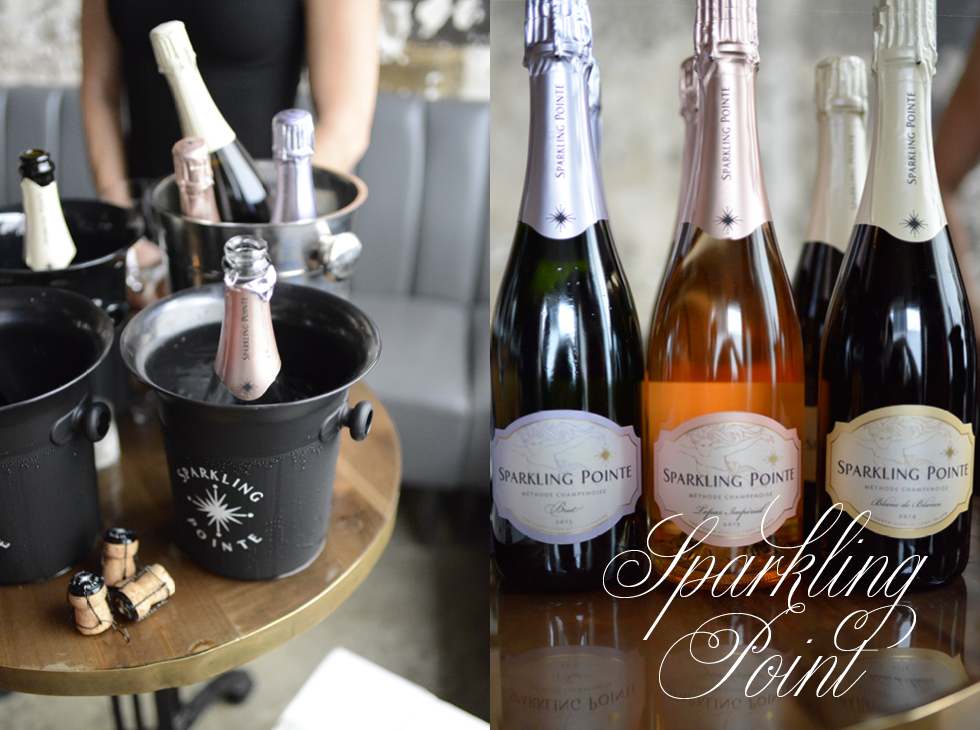
Sparkling Pointe
From the North Fork of Long Island comes a brand of bubbly who produce their wines in the traditional Méthode Champenoise. (Think about visiting their tasting room which hosts daily tastings and educational classes.) The Brut is a blend of Chardonnay and Pinot Noir with a bright golden color. Notes: fresh aromas of lemon rind, apple, and ripe pear, which enlighten its underlying brioche scent. A creamy and toasty finish. Elegant and structured, delicate floral and flinty notes. $29.
Blanc de Blancs is made of 100% Chardonnay, and aged for 3 years on its fine yeast lees, adding its toasty flavors and enhancing its creaminess. Notes: A bright gold color, presents floral aromas with notes of green apple and melon. Flavors of lemon zest and dough add to its crisp mineral edge. Striking in acidity and dry in style, it finishes elegantly on a lemon rind and biscuit note. $44.
Topaz Imperial shines as a light, silvery-amber color. Notes: Juicy, smooth, funky, crisp & savory. Aromas of creme fraiche, dried peach, cherries, and strawberry, sourdough roll, and dried flowers. $37. sparklingpointe.com
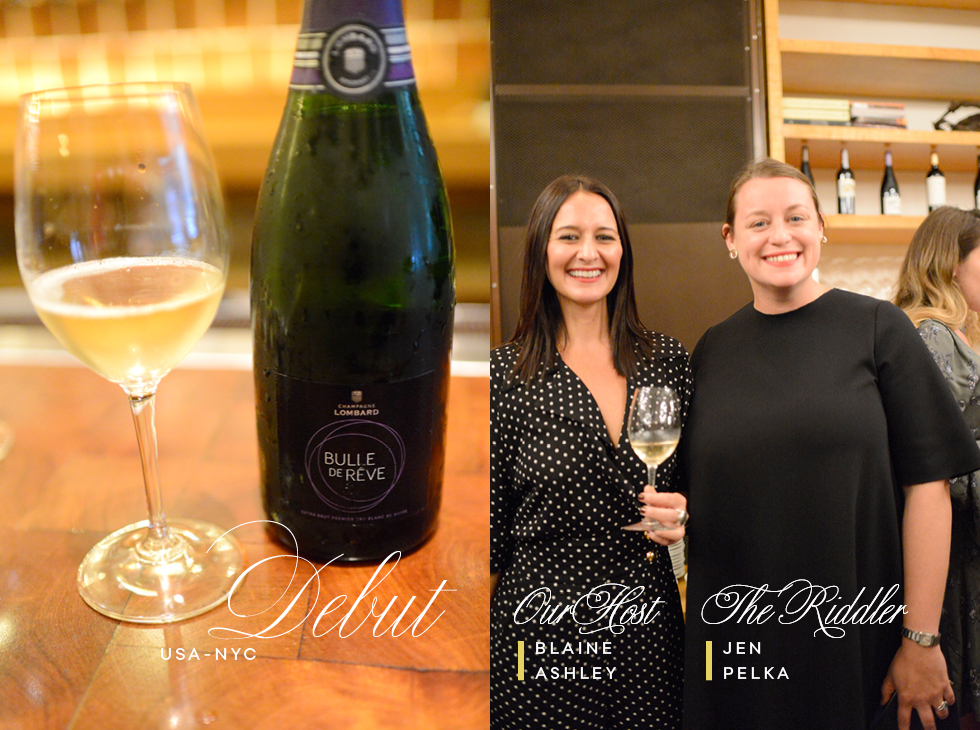
Bulle de Rêve Champagne Extra Brut NV by Champagne Lombard
A limited edition cuvée, Bulle de Rêve (which translates to Dream Bubble) is produced by NY Champagne Week founder Blaine Ashley in collaboration with Champagne Lombard. Her exclusive release is 100% Premier Cru Pinot Noir, aged for 2 years on its lees.
Blaine recommends, “Champagne all day” with these pairings: for breakfast, match with a smoked salmon omelet; for lunch, hay-roasted oysters; end the day with lobster Cantonese. Notes: A straw yellow champagne with a nose of medium intensity, citrus and red fruits. Medium bodied, dry, medium-high acidity, medium-long finish, lemon, raspberry, almond. Wine Enthusiast: 90. Available at Bottlerocket. $59.
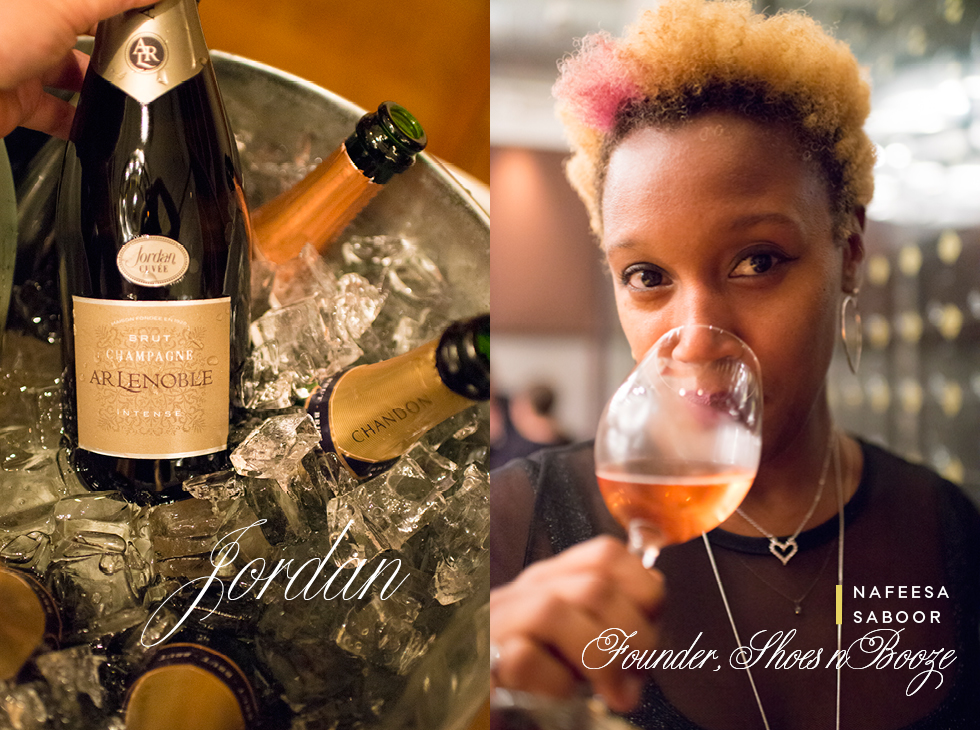
Jordan Cuvée by Champagne AR Lenoble
California meets Champagne. Two families joined forces to bring traditionally and lovingly produced champagne to the states. Established in 1972, Jordan Vineyard & Winery was modeled after the great wine estates of France and have now teamed up with one the best Champagne houses in France, AR Lenoble.
The Jordan Cuvée by Champagne AR Lenoble is comprised of 30% grand cru Chardonnay from Chouilly (some of Côte des Blancs’s best vineyards), 35% premier cru Pinot Noir from Bisseuil and 35% Pinot Meunier from Damery, with reserve wines making up 35%. This fine Champagne spent four years aging on the lees before its debut. Notes: A brilliant, gold color with radiant bubbles. Its elegant bouquet is defined by subtle aromas of apple, pear and brioche. Smooth and fresh on the palate, the Champagne has a creamy texture balanced by lively acidity, crisp apple and citrus flavors and an attractive steely character. $49. To purchase the wine, you can visit the winery, email (info@jordanwinery.com) or call 800-654-1213. At this time, shipping is only available to addresses in California. Good reason for a trip! jordanwinery.com
Thomson & Scott
Hobnob got to try the first sip at this brand’s USA debut tasting, hosted at North Square in NYC. Thomson & Scott emphasizes wines with less sugar—while maintaining a serious, full-bodied taste. CEO and Founder Amanda Thomson was raised on a vegetarian, sugar-free diet so is used to being careful about what’s in her food. When founding Thomson & Scott in the UK her goal was to use as little intervention as possible when producing their Champagne and Prosecco, and stick to vegan and organic principles.
They’ve teamed up with a talented Champagne maker Alexandre Penet, from the Grand Cru village of Verzy, famous for producing expressive Pinot Noir, to produce an incredibly pure Champagne with only 6g or less of sugar. Champagne Extra Brut is made with a blend of 40% Pinot Meunier, 30% Chardonnay and 30% Pinot Noir. Reserve wines from older years make up 30-40%, adding complexity and richness. Notes: A light amber color with intense aromas of brioche, nuts and an appealing touch of spice and white pepper. Rich, silky and balanced on the tongue. Has a remarkably long finish. $49.99. (An Extra Brut Rose Champagne wil also be available for those who like to drink pink. $62.99.)
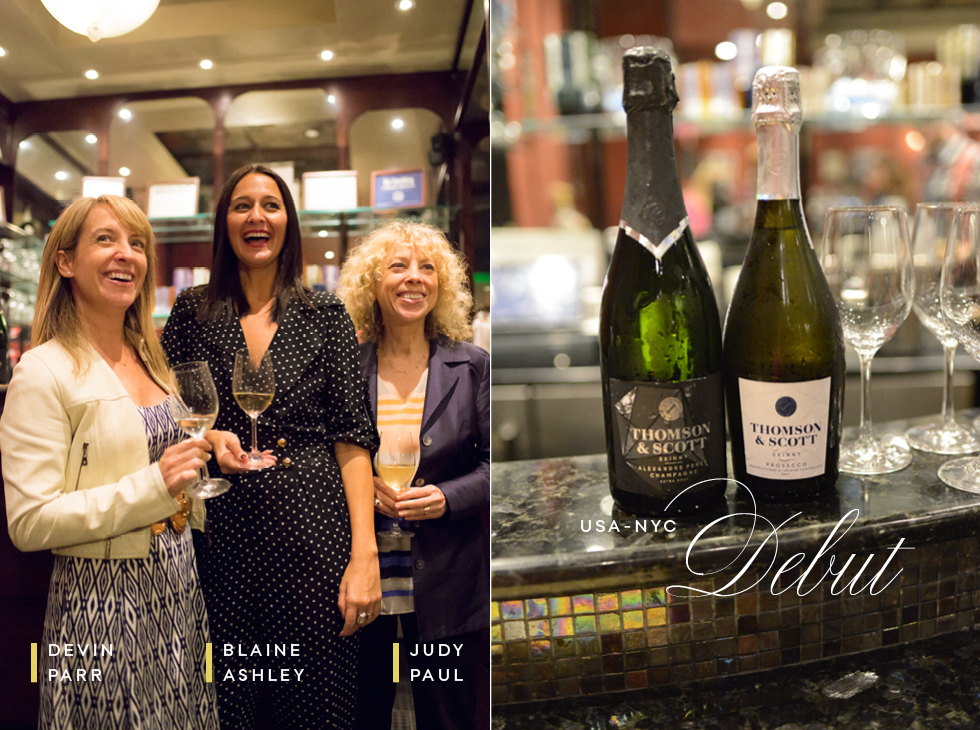
Their Prosecco uses 100% glera grapes grown on the south facing slopes of the foothills of the Dolomites. Certified 100% Organic and vegan. 7g of sugar is added in the production process. Notes: An incredibly dry style, light and refreshing with floral and apple aromas on the nose. The palate is fresh, lively, and fruity with great acidity and notes of green apple, golden apple, honeydew melon and pear. $19.99, mini, $6.99
Thomson & Scott is now available in Texas, Oklahoma, Missouri, Kansas, Massachusetts and Oregon. In NYC head to Bottlerocket at 5 West 19th Street, and stock up for the holidays. An online marketplace is in the works, I’ll post the link once is has launched. As far as pricing goes, suggested retail on the Prosecco 750s is $19.99, the mini Prosecco 187s is $6.99, the Extra Brut Champagne is $49.99 and the Extra Brut Rose Champagne is $62.99. thomsonandscott.com

